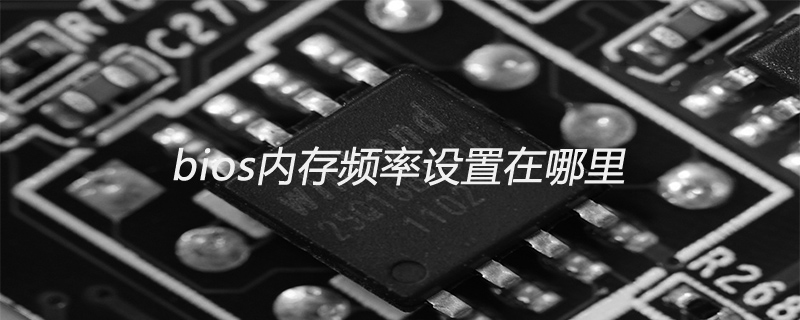

The steps to enter the BIOS to change the memory frequency are as follows:
1. Press the DEL key when turning on the computer. Enter the BIOS setting interface,
2. Find the "Advanced Chipset Features" option in the BIOS settings,
3. Then find the "DRAM Clock" option, position the cursor here and press Enter,
4. Then In the memory frequency setting option that appears, change the memory frequency to the frequency you need to set.
5. Press ESC to exit the settings, then save the settings and restart the computer.
Extended information:
BIOS is the abbreviation of the English "Basic Input Output System". The literal translation of the Chinese name is "Basic Input Output System". On IBM PC-compatible systems, it is an industry-standard firmware interface. The term BIOS first appeared in the CP/M operating system in 1975. BIOS is the first software loaded when a personal computer starts up.
In fact, it is a set of programs solidified on a ROM chip on the motherboard of the computer. It stores the most important basic input and output programs of the computer, the self-test program after power-on, and the system self-startup program. Specific information about system settings can be read and written from CMOS. Its main function is to provide the lowest and most direct hardware settings and control for the computer. In addition, the BIOS also provides some system parameters to the operating system. Changes to system hardware are hidden by the BIOS, and programs use BIOS functions instead of directly controlling the hardware. Modern operating systems ignore the abstraction layer provided by the BIOS and control the hardware components directly.
The above is the detailed content of Where is the bios memory frequency setting?. For more information, please follow other related articles on the PHP Chinese website!